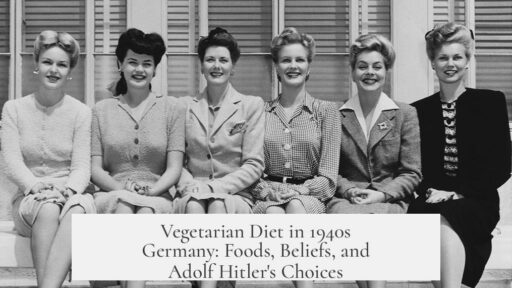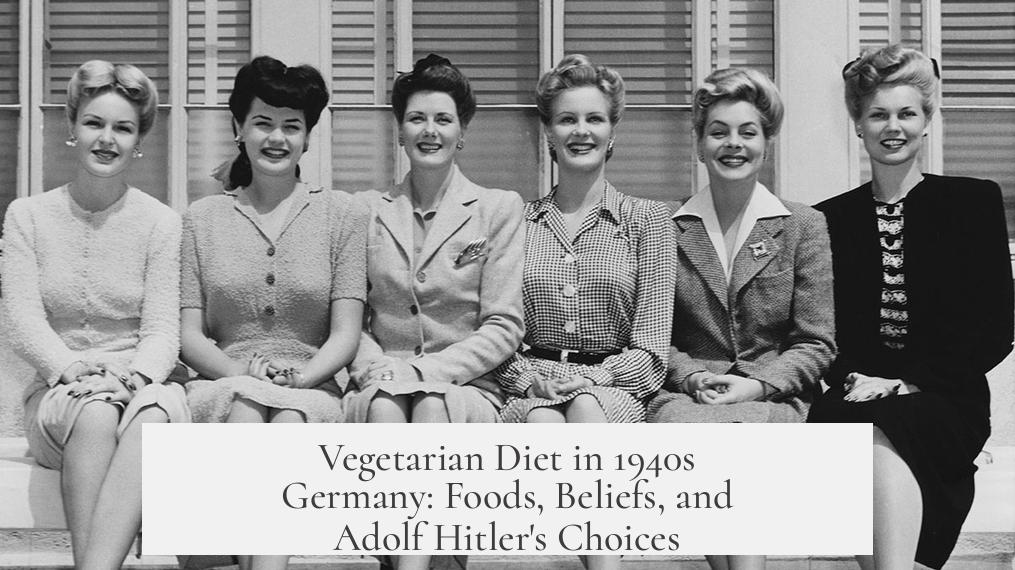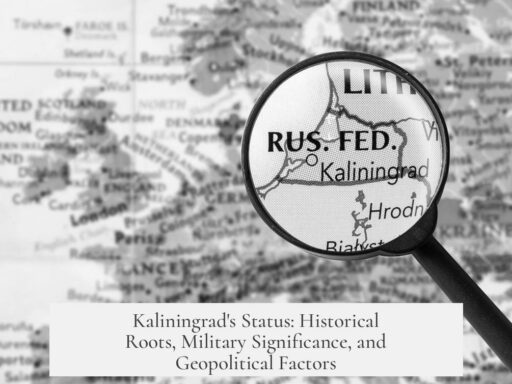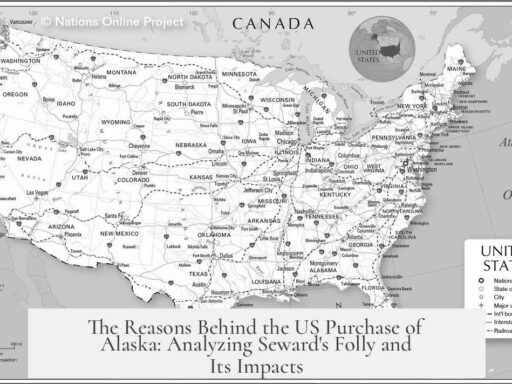Adolf Hitler’s vegetarianism was unusual in 1940s Germany, where vegetarian diets were austere, limited, and not widespread. A typical vegetarian diet in that era revolved around simple vegetables, grains, and potatoes, rather than rich meat substitutes or elaborate entrées.
The vegetarian movement in Germany began in the mid-19th century with societies founded by activists like Eduard Baltzer and Gustav Struve. These groups linked vegetarianism with austere living, including abstaining from alcohol and other indulgences seen as morally questionable. The diet was simple and centered on vegetable-based foods such as pickled eggs (though not vegetarian), roasted potatoes, and various vegetables.
Despite Hitler’s own personal choice to avoid meat at certain periods, independent vegetarian societies were banned by the Nazi regime in 1935. Vegetarianism remained uncommon among the general population. Food shortages caused by World War I and later World War II affected access to animal products, but the Nazis did not promote vegetarianism as a mainstream lifestyle. Instead, propaganda stressed the importance of consuming locally grown vegetables to replace luxury items like imported bananas, which were scarce.
Typical foods for vegetarians included:
- Vegetables: Cabbage, cauliflower, potatoes, peas, and asparagus.
- Grains and bread: Brown rye bread (Vollkornbrot), which had racial and cultural significance under Nazi ideology, was a staple.
- Dairy: Quark (a type of fresh cheese) and cottage cheese were common protein sources for vegetarians.
- Simple soups and stews: Recipes in Nazi women’s magazines featured cauliflower soup and vegetable stews.
- Eggs and oatmeal: Occasionally consumed, particularly by those who were vegetarian but not vegan.
Meat alternatives weren’t as developed as modern vegetarian cuisine. Instead of meatballs, people prepared balls made from potatoes and cabbage. This reflects the practical austerity of wartime rationing rather than a focus on culinary innovation for vegetarians.
Food scarcity was a pressing problem throughout the 1940s, intensified by the scorched-earth campaign on the Eastern Front and insufficient food production. Even many non-vegetarians found it hard to access meat consistently. Nazi leaders, including Goebbels and Göring, famously prioritized military spending over food supplies, captured in the slogan “guns before butter.”
Regarding Hitler’s own diet, there is some uncertainty and debate about his level of vegetarianism. Records from “Hitler’s Table Talk” between 1941 and 1944 suggest he supported vegetarian principles. Testimony from Margot Wölk, a food taster for Hitler, confirms he mostly ate vegetarian meals, including asparagus, peas, peppers, rice, salads, bread, and pasta. His doctor noted consumption of oatmeal, cottage cheese, and eggs. Occasionally, Hitler ate luxury items like caviar, which were not available to most Germans. Some contemporaries claim he had periods when he consumed meat such as squab or liver dumplings, indicating his diet may have varied over time. Toward the end of his life, eyewitness Traudl Junge described his meals as mainly mashed potatoes.
In summary, a vegetarian diet in 1940s Germany was modest, practical, and shaped by wartime scarcity and cultural ideology. It lacked the variety and sophistication of modern vegetarian cuisine but emphasized local vegetables, grains, and simple dairy products.
| Aspect | Details |
|---|---|
| Typical vegetarian foods | Potatoes, cabbage, cauliflower, peas, rye bread, quark, eggs, oatmeal |
| Vegetarian society status | Banned in 1935 under Nazi Germany |
| War impact | Food shortages limited meat consumption for many |
| Hitler’s diet | Primarily vegetarian, some periods with meat, ended with mashed potatoes |
| Propaganda | Promoted local produce, avoided luxury imports like bananas |
- Vegetarianism was rare and austere in 1940s Germany.
- Diet centered on local vegetables, grains, and simple dairy products.
- War shortages limited meat access for much of the population.
- Independent vegetarian groups were banned under Nazi rule.
- Hitler’s vegetarianism was inconsistent but leaned toward simple vegetarian meals later in life.
I have heard that Adolf Hitler was a vegetarian. But when I think about German food, I can’t think of a single vegetarian entrée. What would a vegetarian diet in 1940s Germany actually look like?
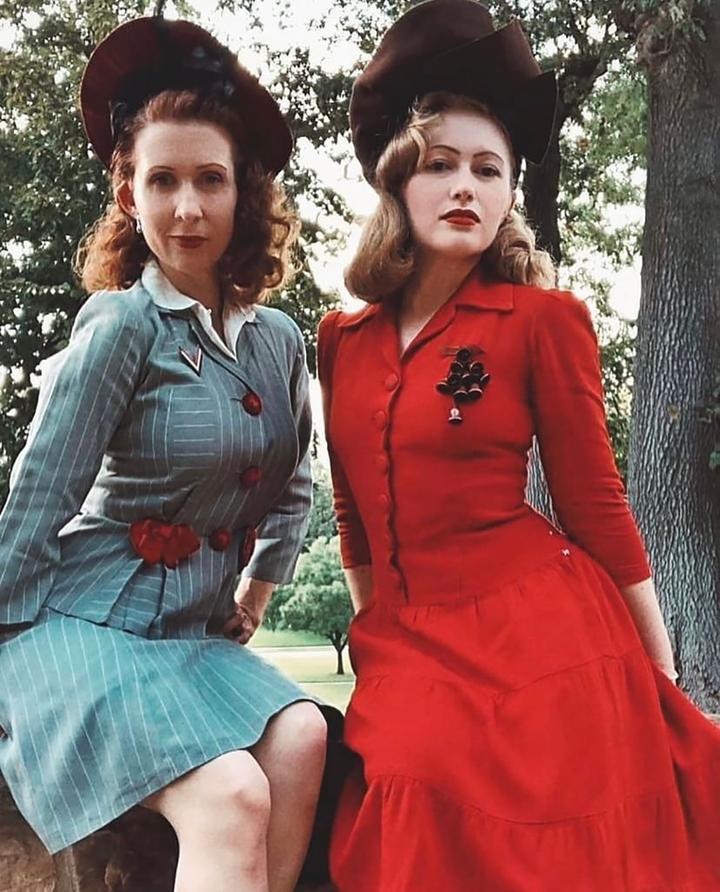
Hitler’s vegetarianism, while somewhat debated, highlights how a vegetarian diet in 1940s Germany was not only rare but also austere and heavily influenced by wartime shortages and propaganda. So, what did vegetarian life actually taste like back then? Let’s dive into the roots of vegetarianism in Germany and explore the plates that might have graced tables during that era.
Starting with the Vegetarian Movement in Germany: A Surprisingly Old Tradition
Believe it or not, Germany’s vegetarian movement started way back in the mid-1800s. That’s more than half a century before WWII rocked the globe. Two key figures were Eduard Baltzer, who founded the German Natural Living Society, and Gustav Struve, who began the Stuttgart Vegetarian Society in 1868. These early groups promoted a lifestyle that was much more austere than today’s veggie lover gatherings.
Vegetarian diets in that period meant abstaining not only from meat but also from alcohol and other “symbols of poor moral character.” Yes, the vegans (well, vegetarians) of the time were strict. Pickled eggs, roast potatoes, and heaps of vegetables were staples. The word “fun” probably didn’t make it onto the menu very often.
Vegetarianism under Nazi Rule: Banned but Endorsed?
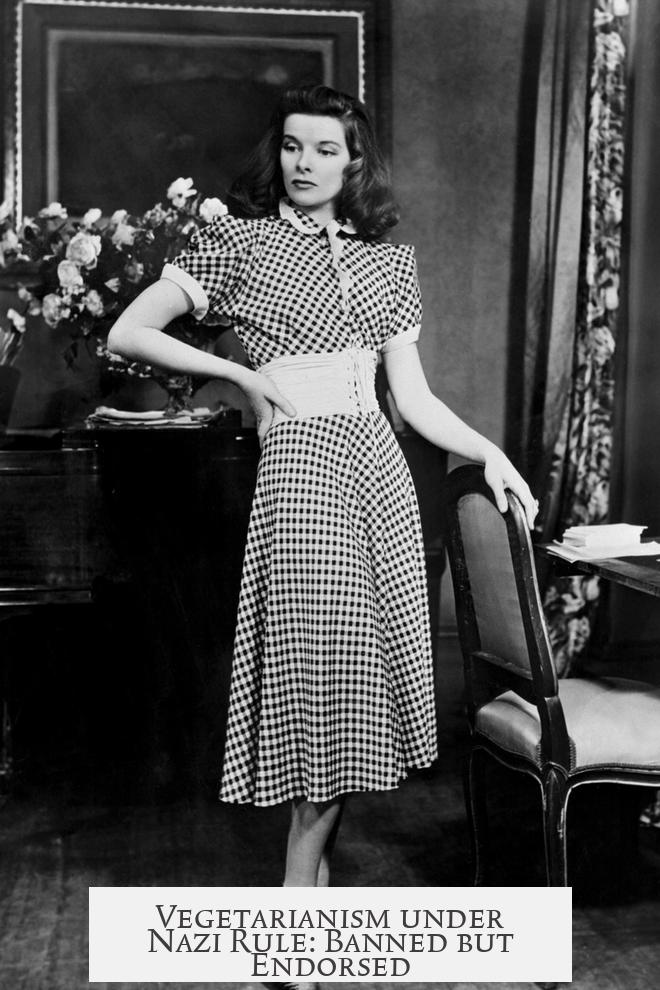
Here’s a paradox for you: despite Adolf Hitler’s own leanings toward vegetarian meals, independent vegetarian societies were actually banned in Nazi Germany from 1935 onward. Sounds contradictory, right? The Nazis didn’t want alternative lifestyles gaining traction that could perhaps chip away at their control or ideology.
Still, Hitler’s personal diet created a curious mix of propaganda and scarcity. Much of the historic diet framing around Nazis involves iconic, meaty German dishes—sausage, schnitzel, pork knuckle—but many citizens simply didn’t have consistent access to meat due to WWII rationing.
The Impact of War and Propaganda on Diet
WWI’s harsh food shortages left deep scars. By the 1930s and 40s, many Germans were used to eating less meat. Vegetables, grains, and potatoes were central to survival. Nazi propaganda cleverly promoted local produce and called imported luxury food items scarce, specifically bananas! One wartime poster humorously shows a woman lamenting the lack of bananas while surrounded by fresh, local vegetables—a gentle nudge to eat in line with the “fatherland.”
Breads like Vollkornbrot (dark rye whole-grain bread) took on racial and political symbolism—viewed as a “more German” bread compared to wheat varieties that Nazis disparaged. Quark, a type of soft fresh cheese, was another common food that was both vegetarian-friendly and politically endorsed.
In Nazi women’s magazines, recipes featured cauliflower soups, potatoes, cabbage, and grains. Instead of meatballs, you’d find cabbage or potato balls. This gives us a clear image: imagine simple, humble meals that balanced what was available amid wartime strains. Not exactly the vegetarian gourmet fare one might imagine today, but practical and filling.
Hitler’s Own Vegetarianism: Fact, Fiction, or Flexible?
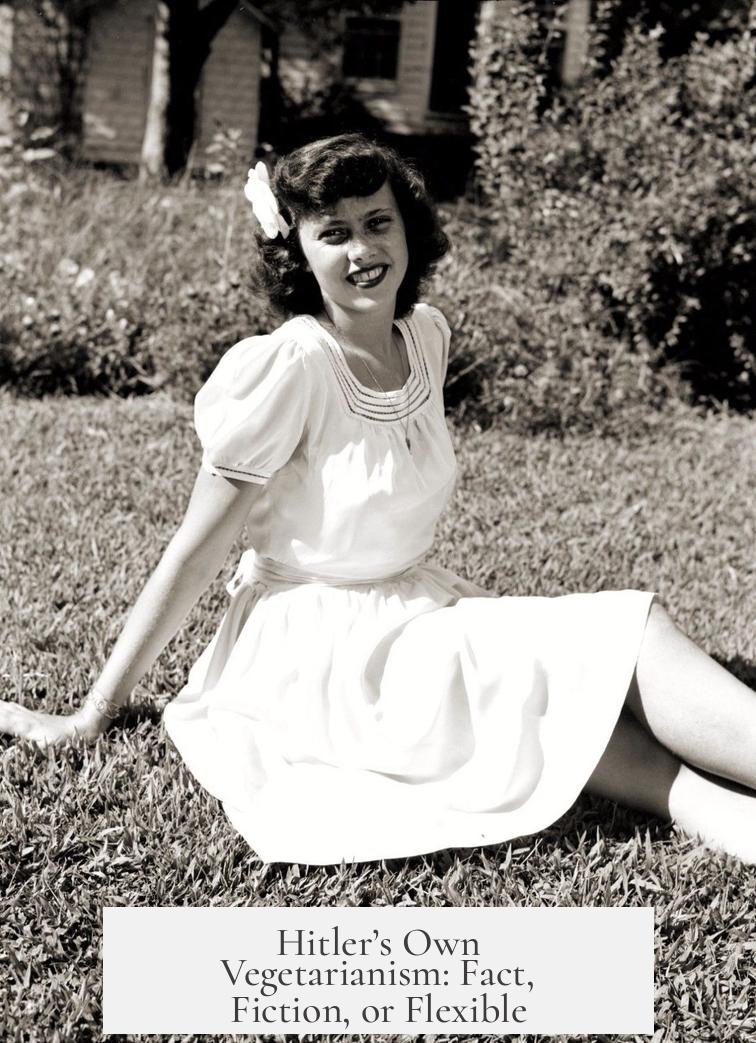
As for Hitler himself, his diet is legendary and somewhat mysterious. Accounts vary about when and why he supposedly went vegetarian. His table talk from 1941 to 1944 supports his backing of vegetarianism—but there’s good reason to be skeptical of all the records. Public statements may mix image crafting and reality.
One of Hitler’s food tasters, Margot Wölk, confirmed that he favored vegetarian dishes such as asparagus, peppers, peas, rice, salads, bread, and pasta. His doctor also mentioned oatmeal, cottage cheese, and eggs. Take note: eggs and dairy aren’t vegan, but they fit vegetarian categories.
Notably, despite his mostly vegetarian preferences, Hitler indulged in luxuries like caviar when available—far removed from the average German’s table. And his diet wasn’t static: earlier in life, he might have eaten squab or liver dumplings. Towards the end of his life, he reportedly ate mostly mashed potatoes, a humble dish reflecting scarcity or personal health.
Putting It All Together: What Did a Vegetarian Meal in 1940s Germany Really Look Like?
- Staples: Potatoes (roasted, boiled, mashed), cabbage (red or white), assorted root vegetables, and local greens.
- Breads: Vollkornbrot — dense, rye-based whole grain, a centerpiece rather than a side note.
- Dairy: Quark cheese, cottage cheese, sometimes eggs—allowing more protein options than some might expect.
- Soups: Cauliflower soup, vegetable stews, or simple potato-based broths.
- Miscellaneous: Potato and cabbage balls instead of meatballs. Pickled foods like sauerkraut and pickled eggs.
So, does this sound very different from your image of German cuisine? It should! The austere, vegetable-heavy diet reflected wartime realities and ideological messaging more than traditional or hearty German cooking stereotypes.
Lessons from History: Can We Appreciate Vegetarianism Through This Lens?
Food culture often mirrors social and political currents. The 1940s German vegetarian diet sheds light on dietary adaptation to scarcity and ideology. It also reminds us that vegetarianism isn’t always about “fancy salads” or trendy alternatives—it can stem from necessity, moral beliefs, or propaganda.
Considering this, would today’s vegetarians find 1940s Germany’s version appetizing? Perhaps not by modern gourmet standards. But it shows an early evolution of meatless eating under difficult circumstances.
Have you tried making cabbage and potato balls yet? It’s a humble dish with a surprising history, proving that vegetarian food has been part of culture, even when overshadowed by stereotypes or scarcity.
“Even in the harshest of times, and under bizarre contradictions, food tells a story about people’s lives and choices.”
So next time you think about Hitler’s vegetarianism or German cuisine, remember—there’s more behind the sausage! The 1940s German vegetarian diet was a blend of austerity, ideology, and survival, served on a platter of potatoes, cabbage, and subtle messages.
